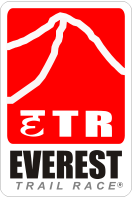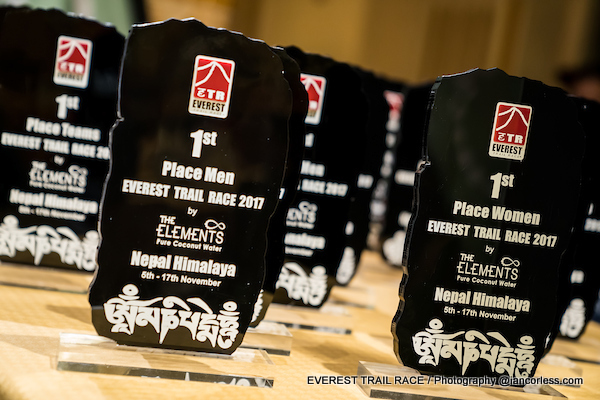FAQ's
Can a relative or partner come with me?
Yes, he/she can. ETR organization offers a trip program allowing companions travelling together with runners, as well as making a section of one of the most interesting treks that one can enjoy in the Himalayas. The itinerary also matches with the race at the end of the 4th stage, start of the 5th stage and race finish.
¿What level is required to participate in the ETR?
The ETR is open to a wide range of physical abilities. Runners can go at their own pace, so cutting times of check points and finish are broad. However, the hardness of the stages in terms of altitude and distance make it a selective test for those not accustomed to running or brisk walking long distances and significant slopes
What kind of terrain runs the ETR?
The terrain is varied and mostly runs along mountain trails used by locals to travel. In part, follows routes traveled and in part it is outside usual trekking routes and transit of people. There are very few sections without slope, either positive or negative. The Himalayan own configuration requires us to surpass mountain hills, through dirt roads. The zones of stone steps are common, combining woodland, passing through many villages and high deforested mountain areas.
Where is the race?
In the Himalayas of Nepal and specifically in the region of Solokhumbu. We use trekking rutes to Everest base camp and also not-traveled areas, which makes this race a constant discovery, full of interesting corners, both geographically and culturally. Villages, monasteries, paths in the forest, etc. make up this route, that runs between 2000 and 4100 meter high.
What day exactly the race starts?
On November 14th at 9:00 a.m. first stage of 2025 Edition of the EVEREST TRAIL RACE will be starting.
What is the route of the race?
The exact route will be given to the runners when delivering the ROAD BOOK during the Thecnical Controls in kathmandu
What time do we get up?
At 5:30 or 6:00 a.m. organization wakes all participants up, depending on the output stage, which is scheduled between 7:00 - 9:00 am.
What time beginning stages?
The stages usually begin from 8:00 to 9:00 a.m. Exceptionally, depending on the distance and slopes of the daily stage, departure time may be earlier.
What is the closing time of arrival at finish from the start?
Closing times of check points pass as well as crossing finish line vary accordingly to stage distances and height. In any case, all stages should begin and end with sunlight, ie, from start to finish it will never exceed than 7-9 hours, which is the estimated time the organization considers is enough for a runner in good fitness to complete the stage.
If I go out of control, I can stay in the race?
If a runner falls off cutting times established by the organization, he/she can stay in the race and therefore depart the next day, as long as their physical condition allows him/her and as authorized by the race medical directo. In any case, his/her results are no longer taken into account in the overall standings.
If I go too slow, can I be left alone in the route?
In any case a single participant can be left in the path. Several organization members go always behind the runner in last position.
Should we bring food and beverages during the race?
It is not a self-sufficiency race. Therefore, the organization provides breakfast, lunch and dinner as well as running the refreshment (water, fruit, etc. ..). Runners must fill drums and / or canteen at each refreshment point and transport the waste they generate until the daily finish point.
What is the distance between aid stations?
It depends on the stage, but as a general rule, the supplies can be found each 7, 8 or 10 kms.
What's at the aid stations?
Depending on the stage and the CP (check point), we can always find water, nuts, cookies, fruit.
What should I do if I want to give up?
Dropouts are situations included in the race regulations. When it happens, it is preferable - whenever possible- do so before the stage output. In case of happening along the stage, the runner wishing to give up should contact one of staff member at check points. Whenever possible, the runner must reach finish line on his own joining the organization team that is in the race queue. Where this is not possible, corresponding procedure established by the rules of the race will be activated.
Should I take some kind of kit?
In the CP’s (check points) as well as in the camps are medical supplies available to the participants. In any event, each runner must carry as compulsory material a skin antiseptic as well as irst aid basic material, and, of course, anything that he sees fit.
The route will be marked?
The route will be duly and properly marked to avoid unwanted confusions.
I can lose myself?
Although the layout of the race runs through clearly marked paths, and following the path should not pose any complication, the possibility of getting lost is objectively possible, so each runner will have a map, compass (compulsory equipment ) and directions of travel. In any case, if there is an area clearly complex, will be monitored by a member of the organization who will give you directions.
Is there mobile phone coverage?
During the race there are several areas with mobile phone coverage. In any event, this coverage is not continuous throughout the entire route. In Kathmandu there is no problem in terms of mobile phone coverage.
How are the camps?
Each camp area will have a section for organization and a section for runners. The runners will be housed in two-men tents. Provided services are: dining tent, medical tent, camp manager tent at the entrance of the camp and toilet tents.
How do we sleep in camps?
In double tents “igloo” type. The mats are also provided by the organization.
Will I have electricity in the camps?
No. The camps, for obvious reasons, will not have power, so any element (camera, phone, etc...) may not be charged at the camp. In some cases camps will be located in towns, where it will be possible to have electricity.
How many meals will be served daily?
The organization is responsible for runners meals (breakfast, lunch and dinner and provisioning for the stage). Because of differences in time spent to complete the stage, lunch is light and is served between 1:00 a.m. and 5:00 p.m. when dining room will be closed. All runners crossing finish line after this time must wait until the next session of dining, at 6:30 p.m.
What kind of food will be in the race?
The diet in the camps of the ETR is varied and plentiful, especially at breakfast and dinner, mainly rich in carbohydrates, vegetables, cereals ...
Is it safe to drink water during the race?
The water supplied by the organization, both in refleshment points and during meals will be bottled. The organization recommends do not drink water that does not offer absolute guarantees of safety.
Can I buy food or drink along the stage?
Mainly, the stages cross villages where it is possible to buy all sorts of things, food, drink, etc. .. The organizers recommend to pay special attention to the health of intake and the stopwatch.
Are medical personnel during the race to meet the runners?
A medical team will be at the stage start and finish line. Also, one or two members of this team are in the race and at he CP’s (check points).
What is the expected weather for the race?
Overall, the climate in Nepal has two seasons: the dry season from October to May and the rainy season from June to September. November is undoubtedly one of the best months to engage in any activity in the area. In any case, given the global weather changes, we must take into account the personal equipment to be used in front of an unexpected weather.
Note that the race is performed at different heights depending on the stage, so we can calculate that the minimum temperatures in the higher race points can reach -5 °C or -6 °C and even -10 °C especially at night and dawn, with wormer temperatures not higher than 15 °C or 18 °C.
Should I bring shelter materials?
Without a doubt, you should. Temperatures at sunset, at night and dawn are especially low,Special attention must be taken both to use warm clothes on completing the stage and concerning to sleeping bag, hat and gloves.
Do I need a visa to enter Nepal?
To enter Nepal you need a passport with a minimum validity of 6 months and the corresponding entry visa to be processed at the airport's international arrival. The rate is about 30 EUR (subject to change) and you need two passport photos.
Do I need vaccinations to enter Nepal?
There are no compulsory vaccinations, but it is advisable to consult with Health Services of your country and keep updated the tetanus vaccination.


